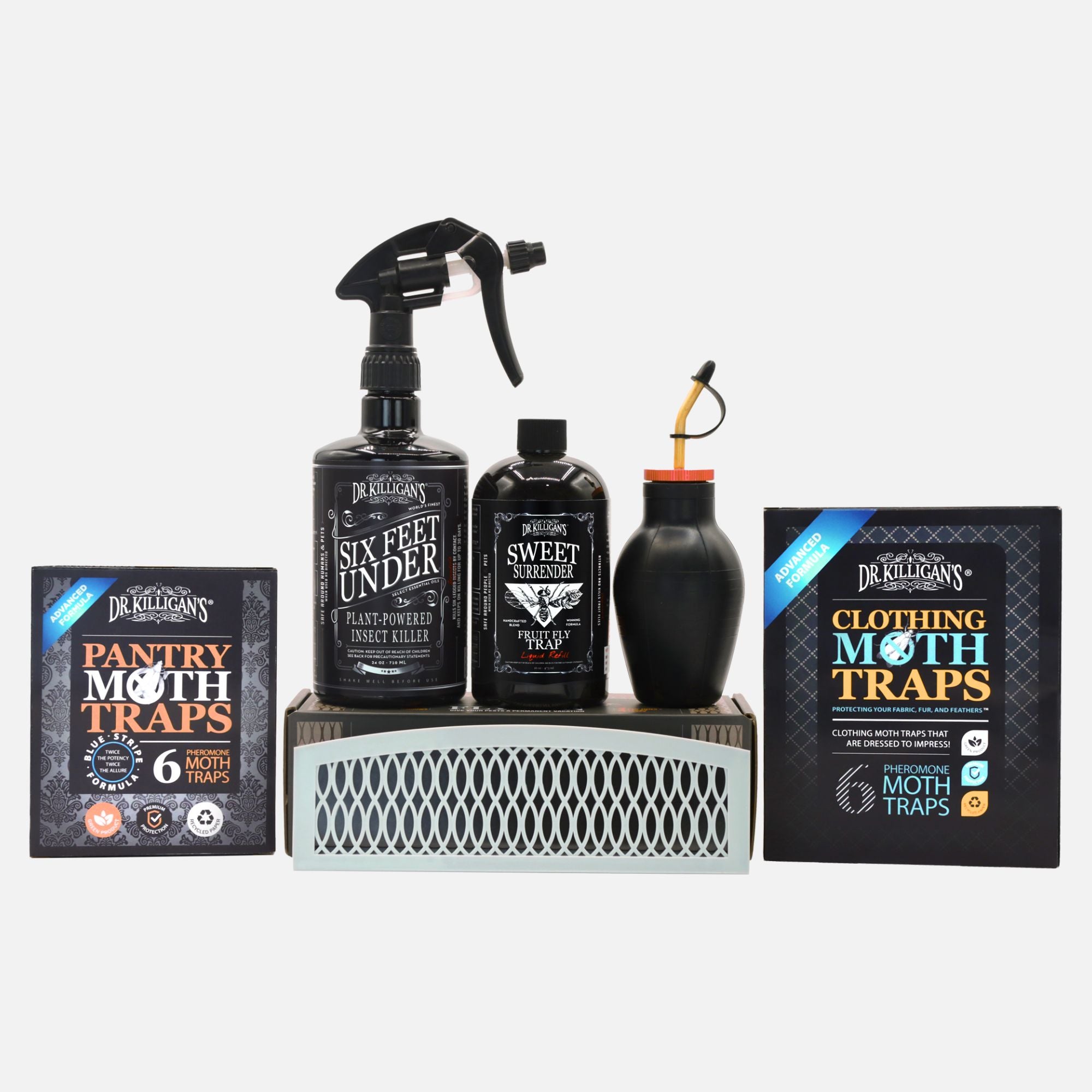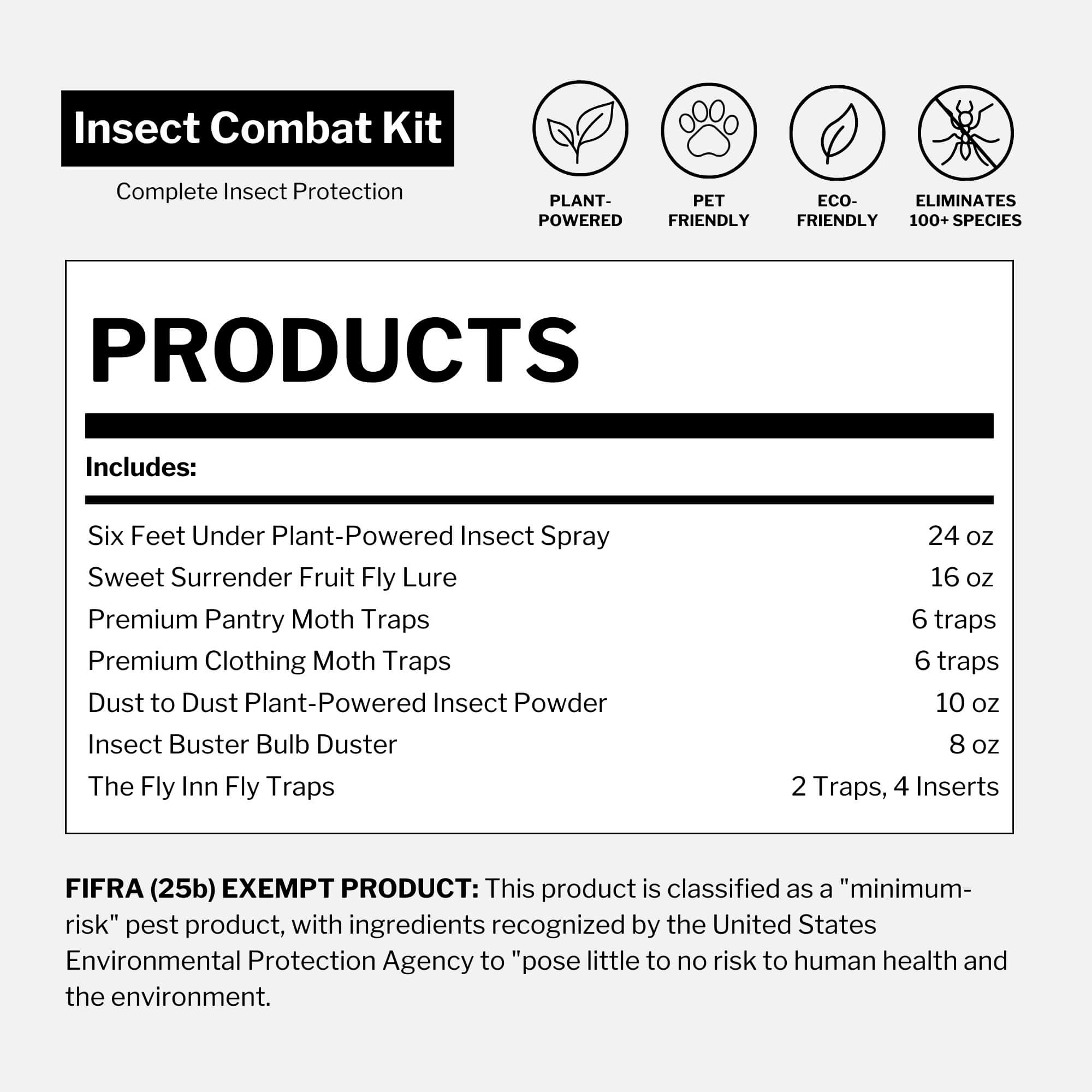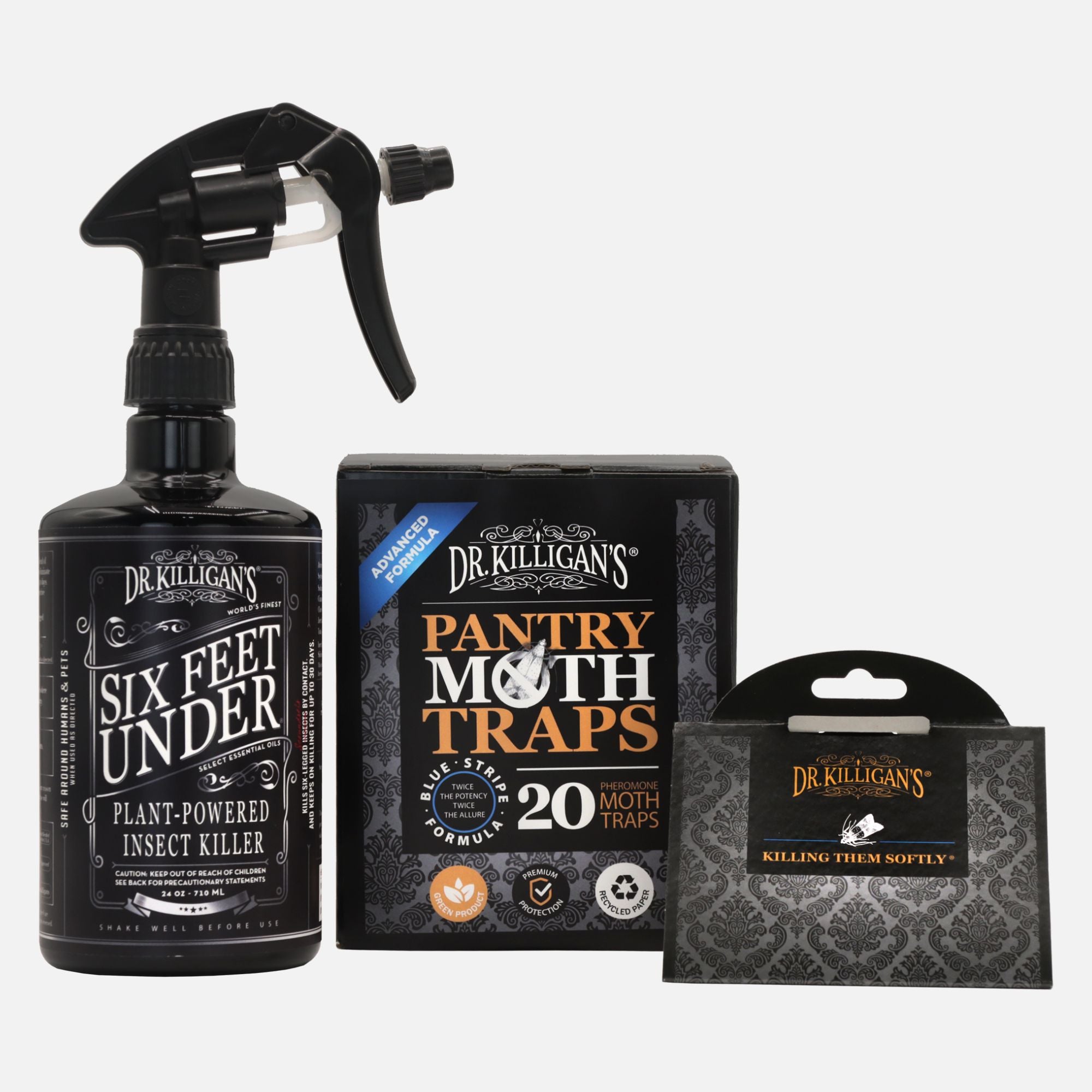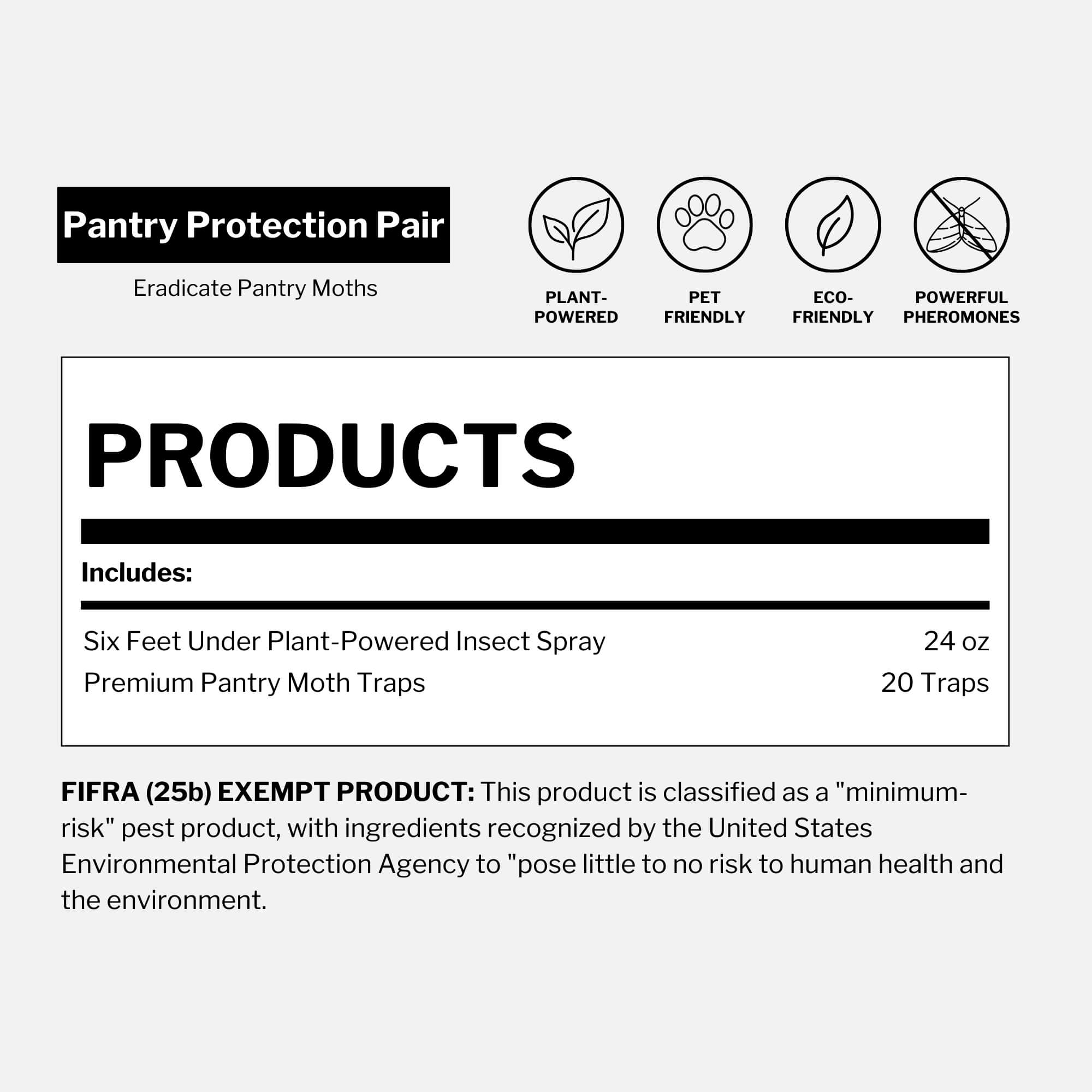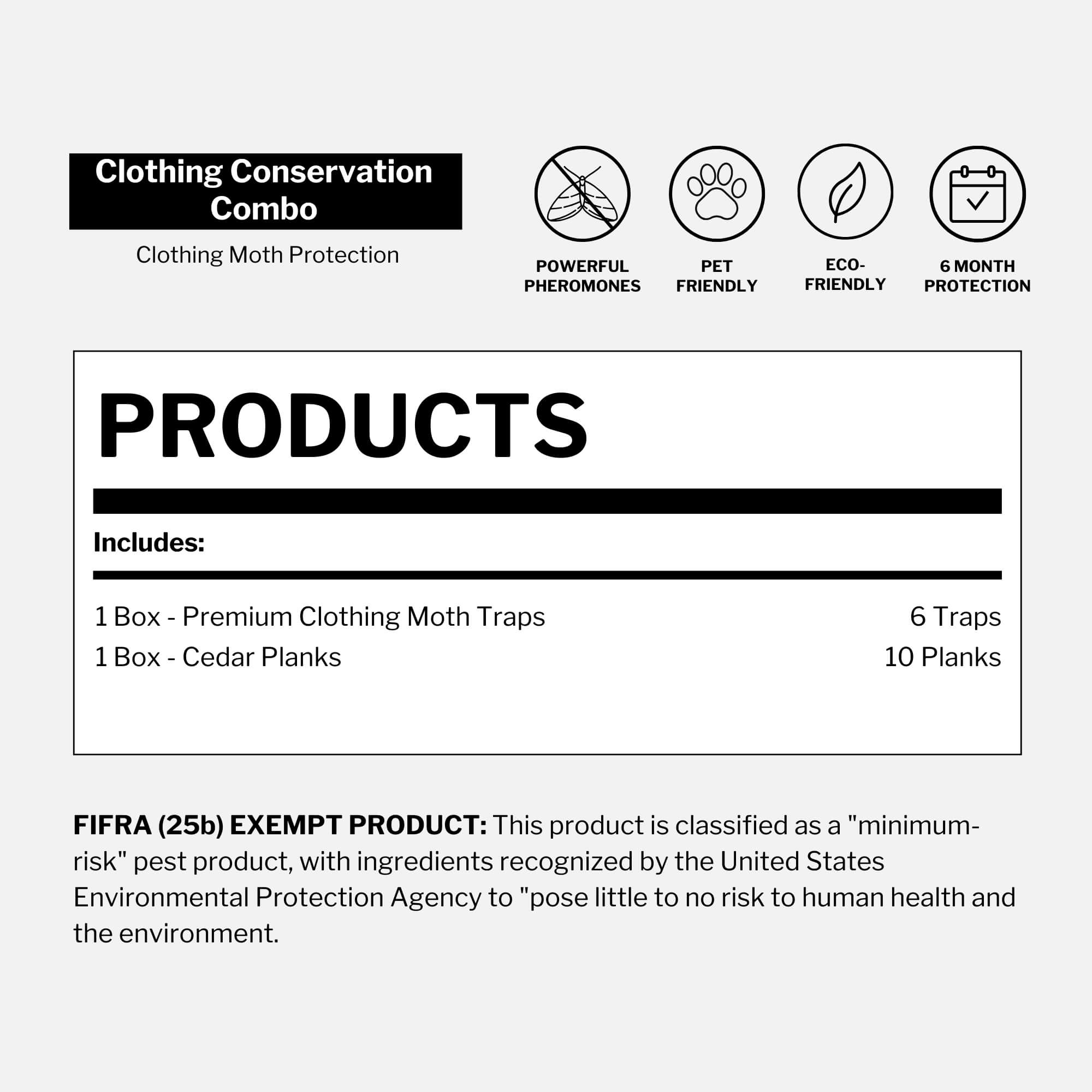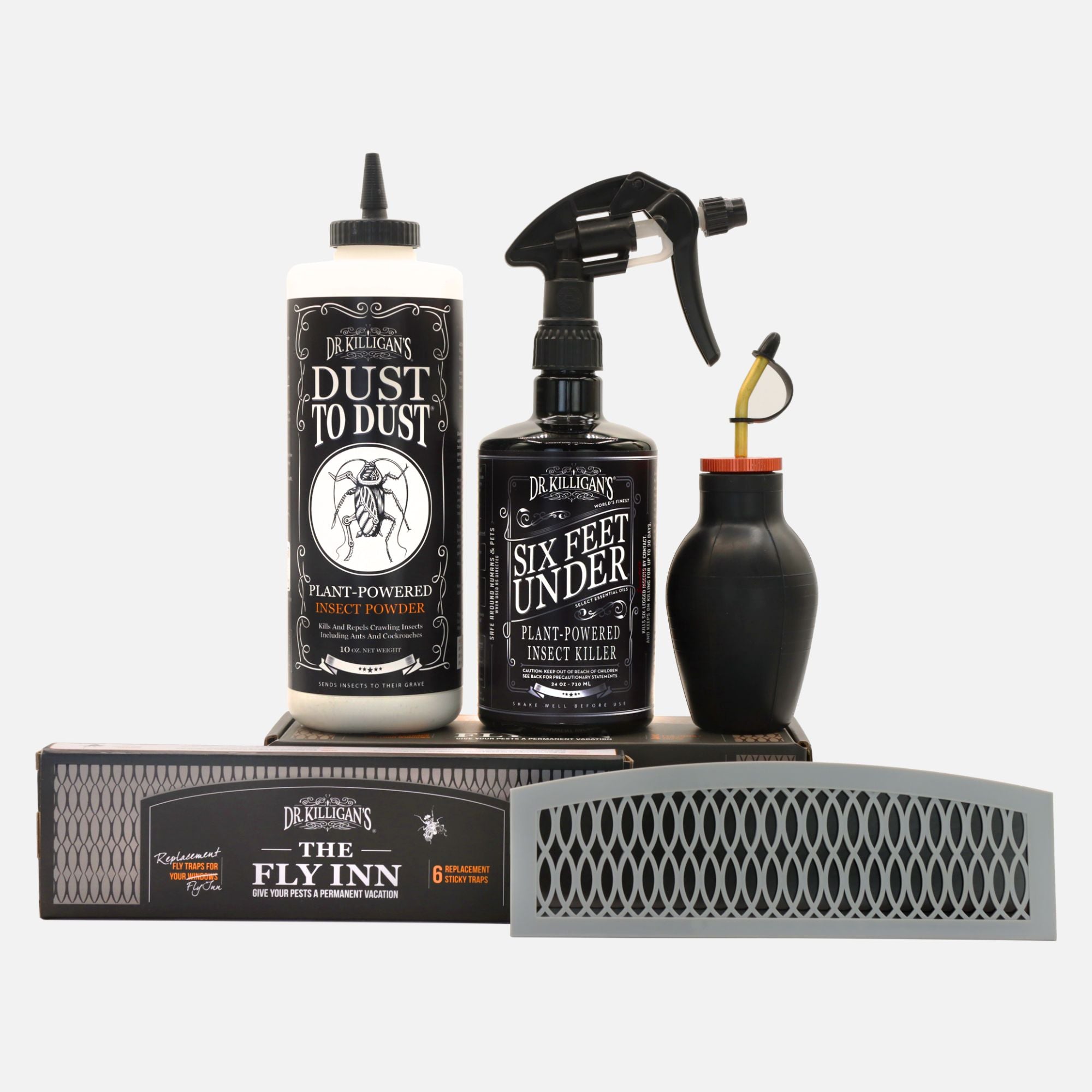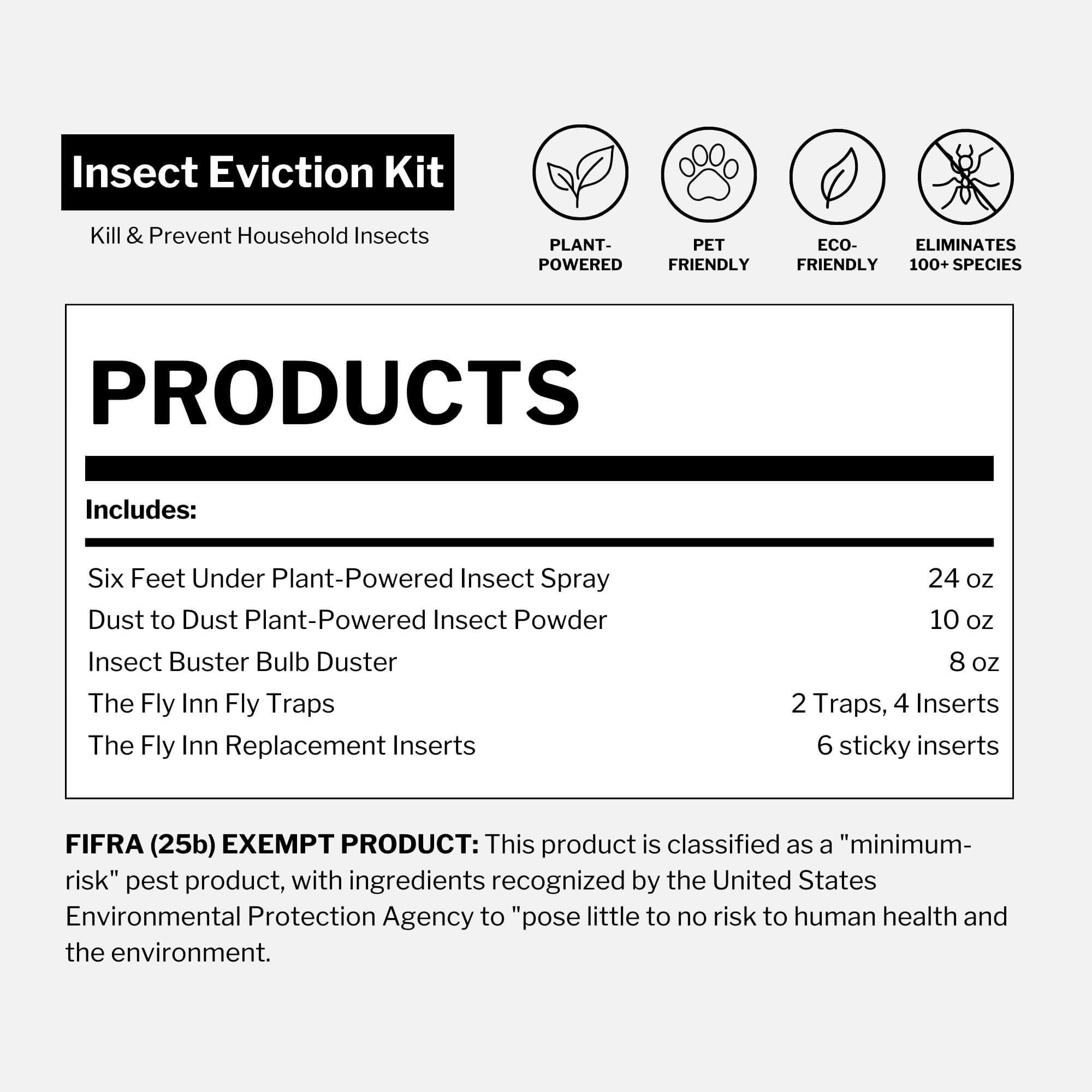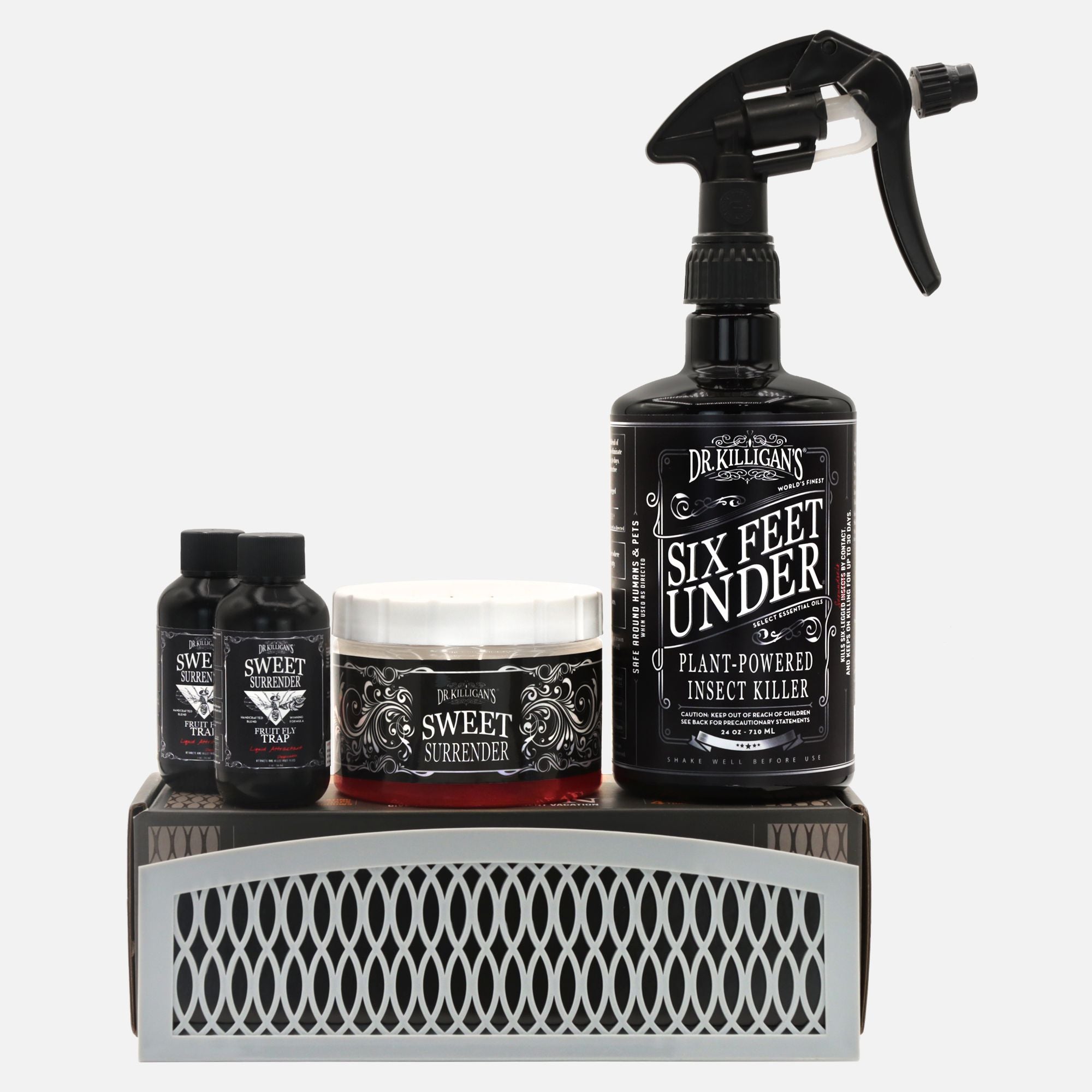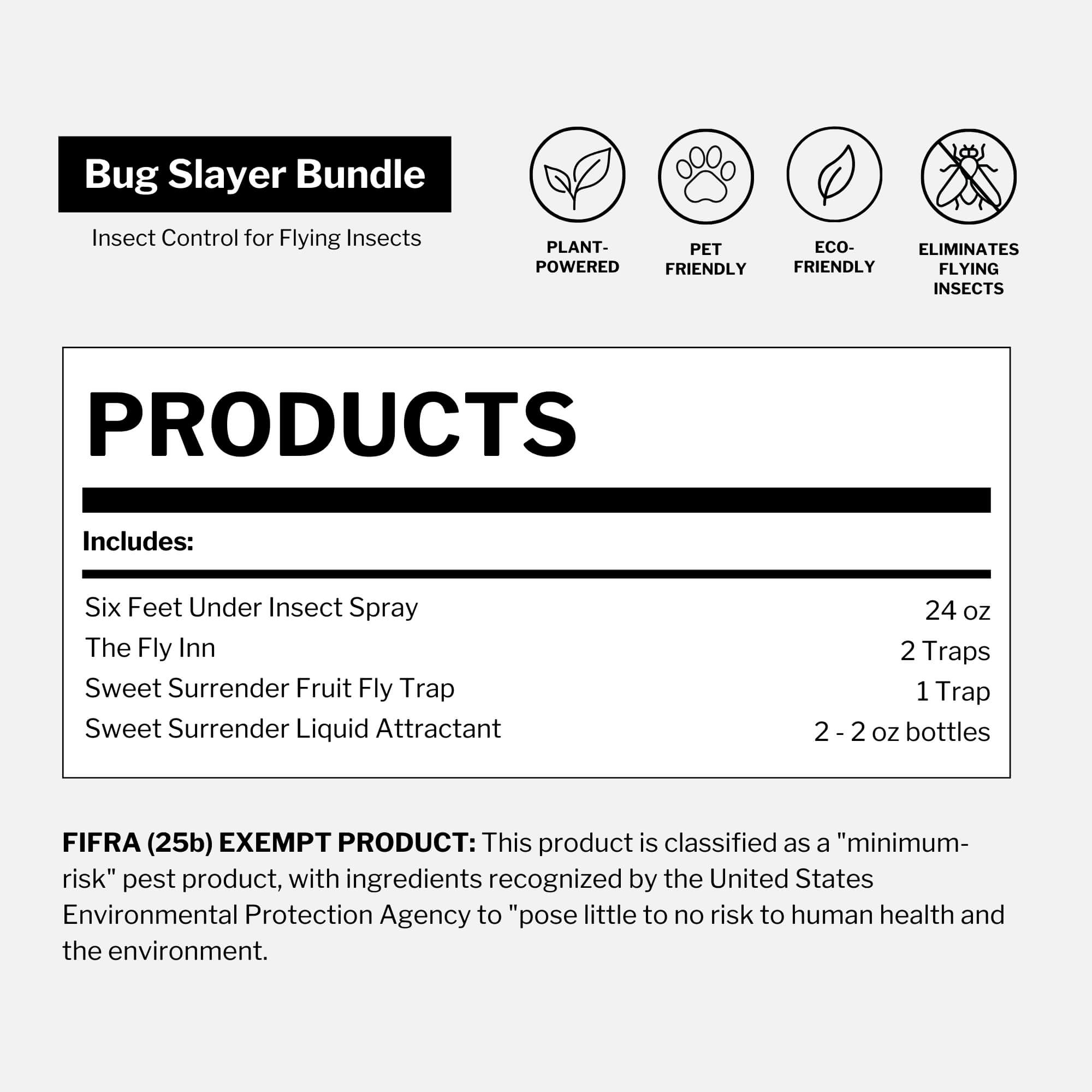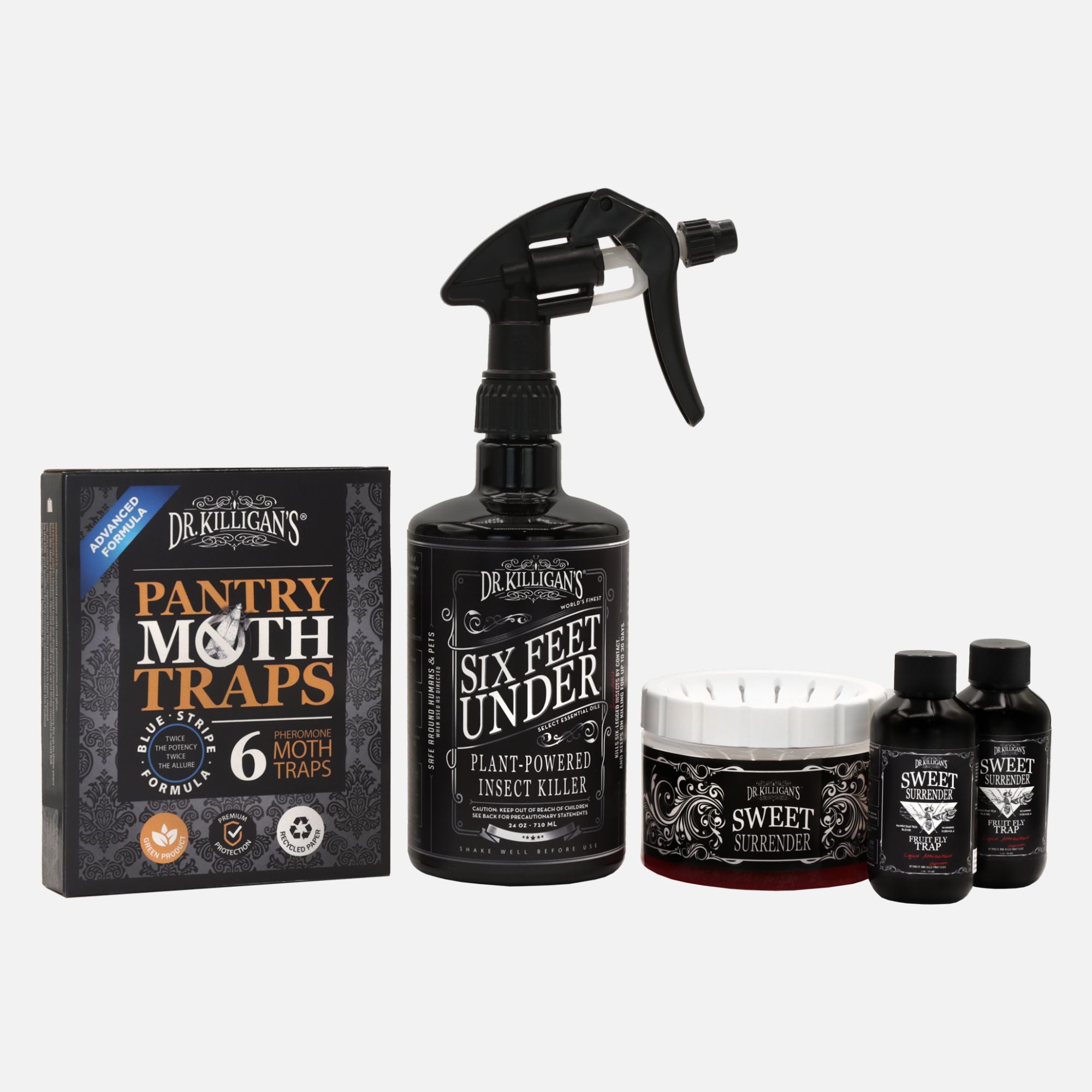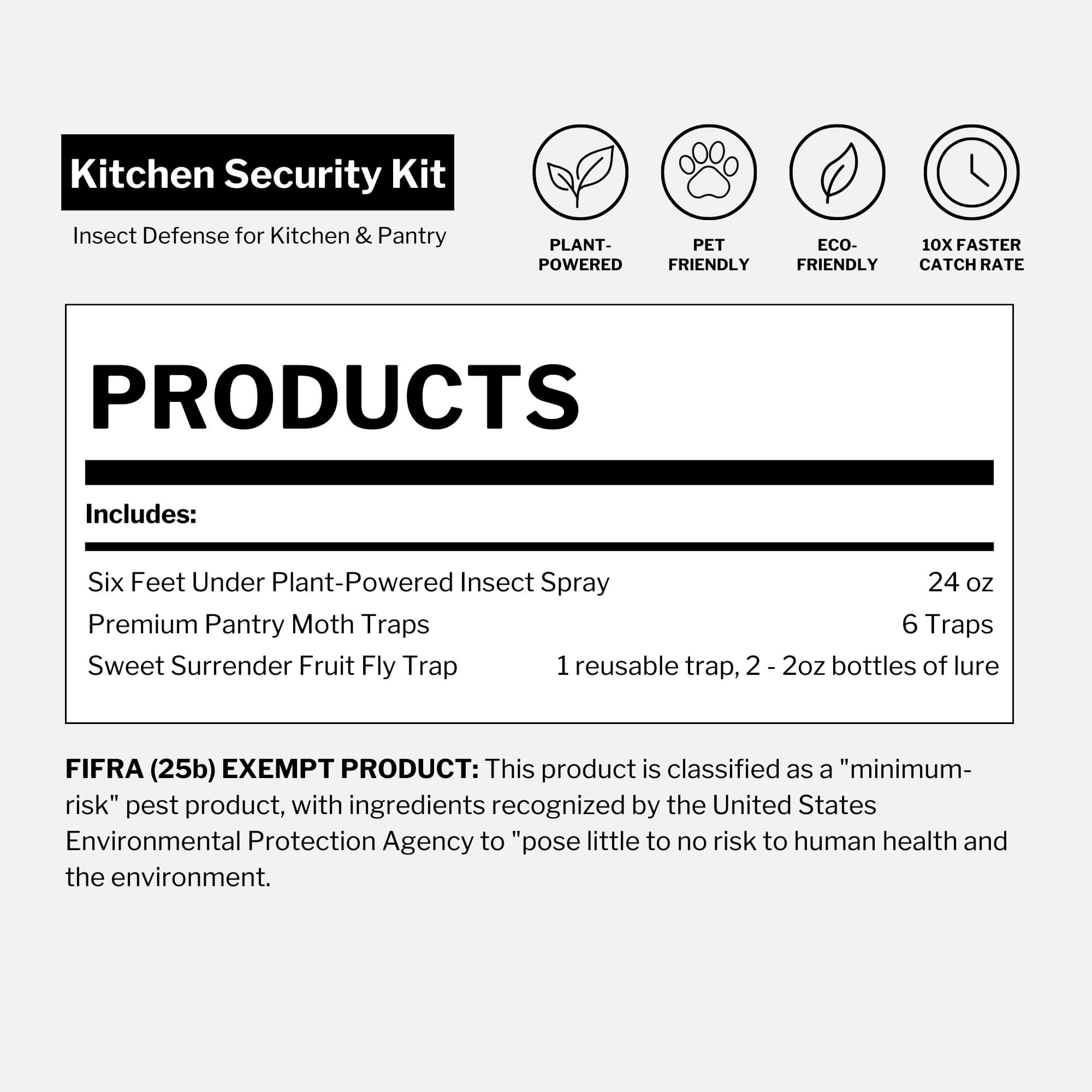Published July 2, 2025 • Updated October 31, 2025
Reviewed by Julie Miller, BA in Language Arts, Editorial Lead, Dr. Killigan’s
TL;DR: Drugstore beetles and cigarette beetles are common pantry pests that infest grains, herbs and stored goods. Learn how to identify, prevent and control them naturally.
Drugstore beetles and cigarette beetles may be tiny, but they’re destructive. These persistent pests can turn your pantry, food storage and even books into their personal buffet. If left unchecked, they’ll contaminate food, damage goods and leave you with a frustrating cleanup.
Understanding their differences—and how to stop them—is the key to keeping your home (and your sanity) beetle-free.
Cigarette beetle vs drugstore beetle: What’s the difference?
Drugstore beetles (Stegobium paniceum) and cigarette beetles (Lasioderma serricorne) are similar in size but differ in appearance, behavior and the types of products they infest.
|
Feature |
Drugstore beetle |
Cigarette beetle |
|
Size |
2–3 mm, elongate |
2–3 mm, more compact, rounded |
|
Color |
Brownish-red, striated wing covers |
Reddish-yellow to brownish-red, smooth wing covers |
|
Antennae |
Clubbed, ending in a distinct three-segmented tip |
Evenly serrated (saw-like) from base to tip, no thickened tip |
|
Body shape |
Thorax and head are aligned with body |
Flatter thorax and downward-bent head, creating a humped appearance |
|
Flight |
Can fly |
Can fly, more active |
|
Diet |
Dry foods, books, spices |
Tobacco, dried herbs, grains, pet food |
|
Damage |
Infests stored products |
Infests tobacco, herbs, grains, household items |
|
Harm to humans |
No bites, food contamination risk |
No bites, contaminates stored products |
Drugstore beetle: Life cycle, damage & control
Adult drugstore beetles are small, about 2.5 to 3.5 mm long, with a reddish-brown color and a rounded body. Their backs are covered in fine grooves, which set them apart from the smoother-backed cigarette beetle. While males and females look nearly the same, experts can tell them apart by subtle differences under a microscope. The larvae are tiny, C-shaped grubs that happily feed on all sorts of stored products.
Life cycle
- Egg: A female drugstore beetle lays up to 75 eggs in or near a food source. The eggs hatch in about 7 to 20 days when temperatures range from 68°F to 81.5°F. Warmer conditions—especially near 86°F—can speed up development even further.
- Larva: Once hatched, the creamy-white, C-shaped larvae feed on stored goods, going through 4 to 6 growth stages (called instars) as they grow.
- Pupa: The larvae spin protective cocoons made of silk and food bits, where they pupate.
- Adult: Adults emerge from their cocoons and can live for up to 7 weeks.
In warm, humid conditions, the entire life cycle—from egg to adult—can take as little as 40 days, but if conditions aren’t ideal, it might stretch to over 85 days.
Damage
Drugstore beetles primarily target dry goods like grains, flour, spices, bread and coffee beans. These persistent pests aren’t picky—they’ll also go after a wide range of materials, including powdered milk, sweets, medicinal plants, dried fruits and seeds. In fact, their tendency to infest pharmaceutical products and herbal remedies is what earned them the name “drugstore beetle.”
Beyond food, they can damage non-food items such as museum specimens, books, upholstery and manuscripts. Their adaptability makes them a significant pest in both homes and commercial settings. Left unchecked, infestations can escalate rapidly—requiring thorough cleaning and long-term control strategies.

Cigarette beetle: Life cycle, damage & control
Description
Cigarette beetles are small, oval-shaped insects measuring about 2 to 3 mm in length. They range in color from reddish-yellow to brownish-red and have smooth wing covers that give them a polished look. Unlike drugstore beetles, cigarette beetles have evenly serrated, saw-like antennae from base to tip and a distinctive humped appearance created by their flatter thorax and downward-bent head. Their larvae are yellowish-white, hairy, grub-like creatures with a brown head capsule and three sets of forelegs, ready to tunnel through a variety of stored products.
Life cycle
Egg: A female cigarette beetle lays up to 100 white, oval eggs one at a time on food materials. The eggs hatch in about 6 to 10 days.
Larvae: Once hatched, the yellowish-white, hairy, grub-like larvae tunnel through food sources, causing contamination and destruction of pantry goods and tobacco products. They take about 30 to 50 days to grow.
Pupa: The larvae spin protective silken cocoons mixed with food debris, where they pupate. Pupation lasts about 8 to 10 days, though it may take longer depending on temperature.
Adult: Adults emerge from their cocoons and can live for 2 to 4 weeks.
In warm, humid conditions, the entire life cycle—from egg to adult—can span 45 to 50 days, but it may stretch to 6 to 8 weeks if conditions aren’t ideal.
Damage
Cigarette beetles primarily infest tobacco products—including cigars, cigarettes and chewing tobacco—and dried plant materials such as herbs, spices and grains. They’re also known to target pet food, dried flowers and pantry staples. But their appetite doesn’t stop there.
Despite their name, cigarette beetles reproduce most efficiently on wheat flour—not tobacco.
These adaptable pests will infest a variety of other items, including rice, ginger, raisins, pepper, drugs, seeds, pyrethrum powder (strong enough to kill cockroaches), old rodent baits and flax tow stuffing in upholstered furniture.
Their global spread is largely due to the trade of dried goods, making them a true international pest.
Did you know? Cigarette beetles prefer tobacco with higher sugar content and lower nicotine levels—a combination that makes it easier for larvae to develop. Spices like cayenne pepper and paprika are also favorite food sources, giving larvae longer lives and greater resilience.
The secret behind their survival: Symbiotic yeast partnerships
Drugstore and cigarette beetles owe much of their success as pantry pests to a secret weapon: internal yeast symbionts that allow them to thrive on nutrient-poor materials.

- Drugstore beetles have a survival trick up their sleeves—a built-in supply chain. Inside their bodies lives a yeast-like fungus that provides essential nutrients, especially B vitamins, from dry goods like spices, books and leather. Even better? Females pass this fungus to their eggs, giving their larvae a nutritional boost from day one.
- Cigarette beetles possess a similar advantage—an internal yeast symbiont. This microbial ally helps them survive on harsh, low-nutrient diets like tobacco and spices.
These symbiotic relationships help both species survive in environments that would starve or poison other pests—making prevention and control even more essential.
Cigarette beetles shrug off nicotine—a compound toxic to most insects—with ease. Over 91% of it passes through their system unchanged.
Do drugstore and cigarette beetles fly?
Drugstore beetles are capable of flight, but they’re more likely to spread via human activity—especially through the movement of infested food or materials—than through active flying.
Cigarette beetles, on the other hand, are agile fliers. According to Clemson University, they can travel up to two miles and are especially active on overcast days or in the late afternoon when temperatures rise above 65°F. Their ability to fly—and their attraction to lights—makes them prone to spreading infestations quickly, even from outdoor sources.
How do drugstore beetle infestations and cigarette beetle infestations start?
Infested products—not open doors—are often the real entry point for beetles. But with cigarette beetles’ strong flight and light-seeking behavior, outdoor access through open windows can also lead to infestations.

Drugstore beetle infestations typically begin when contaminated items like bird seed, dry pet food, herbs or grains are brought into the home. Multiple generations can develop silently inside these products, with infestations only becoming obvious when adult beetles emerge. Watch for signs like shot-like holes in packaging, pockmarked food surfaces or powdery residue at the bottom of storage containers. Though adult beetles don’t feed, they can chew through cardboard, foil and even plastic film—allowing them to escape packaging and spread.
Cigarette beetle infestations may stem from infested grocery items or animal feed, but they also have another advantage: flight. These beetles can travel indoors from surrounding environments, especially in warm, humid months like May and August. They're often found swarming near lights and can also be transported inside pallets, between boxes or within loosely sealed dry goods. While airtight packaging helps reduce risk, even small gaps can offer a point of entry.
Once inside, both species lay their eggs directly on or near food sources. Over time, unnoticed infestations can escalate—especially if products aren’t properly sealed or storage areas are poorly ventilated or retain moisture.
How to get rid of cigarette beetles and drugstore beetles
Getting rid of a cigarette beetle infestation or drugstore beetle problem takes a combination of good hygiene, smart storage and a few powerful add-ons. Learn how to get rid of these pantry pests with proven steps that work in homes and businesses alike.
- Toss out infested items immediately—including spices, grains, dried herbs, tobacco and pet food.
- Vacuum storage areas thoroughly, hitting shelves, cracks and crevices to remove larvae, eggs and food particles.
- Store dry goods in airtight containers made of glass, metal or heavy-duty plastic to keep beetles out.
- Seal cracks and entry points to stop beetles from traveling between storage spaces or entering from outside.
- Place pheromone traps to monitor beetle activity and gradually reduce adult populations.
- Keep your storage areas clean by rotating stock, removing expired goods and inspecting new items before storing.
Extra control tips
Want to step up your beetle battle? Try these advanced options:

- Freeze infested items at 0°F or below for 7–16 days to kill all life stages.
- Use heat treatments of 118°F to 190°F for a few hours—they’re equally effective for extermination.
- Apply Dust to Dust Plant-Powered Insect Powder in pantry crevices or mix diatomaceous earth into bird seed as a natural, chemical-free barrier.
- Spray surfaces with Six Feet Under Plant-Powered Insect Spray. Use it along pantry edges, baseboards and hard-to-reach cracks. It kills exposed adult beetles and larvae on contact.
- Try natural repellents. Essential oils—like those from Zanthoxylum bungeanum Maxim—have been lab-tested and show promising results in repelling drugstore beetles.
Do drugstore beetles and cigarette beetles bite or harm humans?
Neither drugstore beetles nor cigarette beetles bite or sting humans and are not known to transmit diseases.
However, they can still pose indirect risks. Drugstore beetle infestations and cigarette beetle infestations contaminate food and stored goods—as mentioned earlier—making them unsafe to eat or use. As larvae tunnel through dry materials, they leave behind insect fragments, waste and shed skins.
For people with allergies or weakened immune systems, exposure to infested products may trigger health concerns due to mold or microbial contamination. While not harmful in the traditional sense, these infestations are destructive, unsanitary and demand prompt prevention and control efforts in both homes and businesses.
Which beetle is worse—drugstore or cigarette beetle?
Both the drugstore beetle and the cigarette beetle can wreak havoc on your pantry—but in different ways.
- Drugstore beetles are generalists, targeting everything from pantry staples to non-food materials like books and upholstery—making them tough to eliminate without a comprehensive strategy.
- Cigarette beetles, in contrast, focus heavily on tobacco and spice-rich products and, thanks to their strong flight capabilities, they’re more likely to spread infestations across larger areas.




